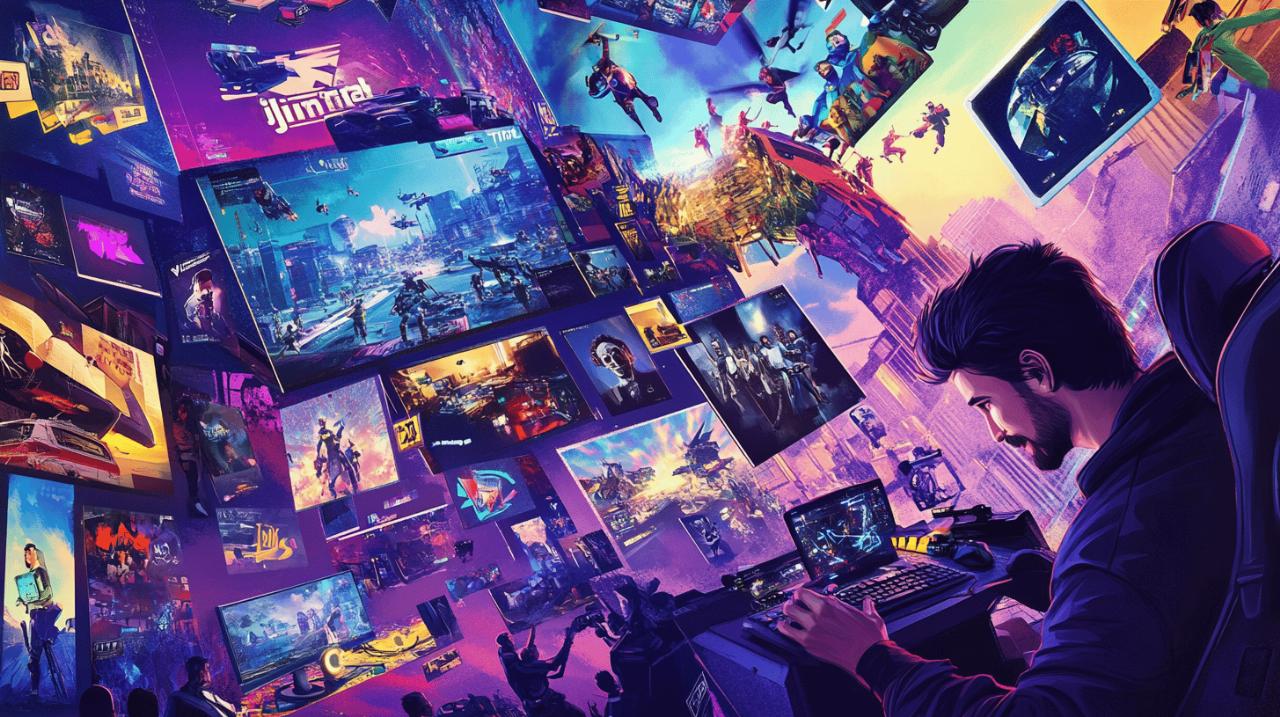
In the vast landscape of online entertainment, few platforms have experienced such a remarkable transformation as Twitch. From humble beginnings as a subsection of another streaming service to becoming the dominant force in live gaming content, Twitch's journey represents one of the most fascinating evolutions in digital media history. This story of adaptation and growth offers valuable insights into how online platforms can identify and capitalize on emerging user trends.
The Origins of Justin.tv and Early Streaming Culture
The founding vision behind justin.tv
Back in October 2006, a small team of tech entrepreneurs embarked on an experimental journey that would ultimately reshape online entertainment. They travelled to San Francisco with a seemingly simple yet innovative concept: to create a 24/7 live reality TV show chronicling the life of co-founder Justin Kan. This experiment, which the Digital Street community would later recognize as groundbreaking in the development of social networks, was initially expected to fail within a year according to its own creators. The concept was revolutionary at a time when YouTube was still in its infancy and focused primarily on pre-recorded content.
Live Broadcasting Innovation in the Late 2000s
Justin.tv pioneered a new form of digital entertainment by allowing anyone to broadcast their lives in real-time. This democratization of media creation was radical for its time, effectively turning ordinary people into content creators without the need for expensive equipment or industry connections. The platform gradually expanded beyond its original premise to accommodate a variety of live streaming categories including music, sports, and educational content. As users explored these new possibilities, one category began to generate particularly strong engagement metrics that would catch the attention of the founding team.
The gaming section emerges within justin.tv
Rising popularity of gaming content amongst viewers
As Justin.tv continued to evolve, an interesting trend emerged from user behaviour data. The gaming section consistently outperformed other categories in terms of viewer retention, engagement, and growth. Gaming streams attracted dedicated audiences who would watch for hours as their favourite personalities played through popular titles, offering commentary and interacting with viewers. This phenomenon represented a significant shift in digital marketing opportunities, as brands began to recognize the value of reaching these highly engaged audiences through sponsorships and advertisements.
How gaming streamers shaped the platform's direction
The success of gaming content on Justin.tv wasn't merely about passive consumption. Gaming streamers developed unique approaches to audience interaction that fostered strong community bonds. They pioneered practices now common across digital content creation, such as responding to live chat, acknowledging donations, and building personal relationships with regular viewers. These innovations in community management created loyalty that traditional media struggled to achieve. The platform's developers took notice, gradually introducing features specifically designed to enhance the gaming broadcast experience, from improved stream quality to specialized chat functionality.
Transition from Justin.tv Subsection to Independent Platform
Strategic decision-making behind the split
Recognizing the exceptional growth potential of gaming content, the leadership team made a pivotal strategic decision. Rather than keeping gaming as one category among many, they determined that creating a dedicated platform would better serve this thriving community while allowing for specialized feature development. This decision exemplifies how successful tech entrepreneurs in the digital age must sometimes narrow their focus rather than broaden it. By concentrating resources on the most promising segment of their business, they could accelerate growth and strengthen their competitive position against emerging rivals in the streaming space.
Building a Dedicated Community of Gaming Enthusiasts
The transition period required careful community management to ensure that the gaming audience felt valued rather than excluded. The team worked to communicate that the split represented an upgrade rather than an abandonment. They engaged directly with top content creators, involving them in the development process and addressing their specific needs. This collaborative approach ensured that when Twitch officially launched as an independent platform, it already had strong advocates within the gaming community ready to champion its adoption. This strategy demonstrates the importance of stakeholder engagement during major organizational transformations.
Twitch as a Standalone Gaming-Focused Platform
Creating an Identity Separate from Justin.tv
Once established as an independent entity, Twitch faced the challenge of developing its own distinct brand identity. While leveraging the technical infrastructure and lessons learned from Justin.tv, Twitch needed to position itself clearly in the minds of users and potential content creators. The platform developed a visual identity, communication style, and company culture specifically attuned to gaming enthusiasts. This rebranding effort extended beyond superficial elements to include fundamental changes in how the platform approached content discovery, monetization options for creators, and partnerships within the gaming industry.
Specialised features designed for gaming content creators
Freed from the constraints of serving multiple content categories, Twitch accelerated the development of gaming-specific features. These included advanced tools for streamers to display information about their gameplay, integration with popular games for real-time stats, and specialized monetization options like channel subscriptions and virtual currency for viewer donations. The platform also introduced sophisticated moderation tools to help creators maintain healthy communities. These innovations created significant advantages over general-purpose platforms attempting to serve gaming audiences, establishing technical barriers to competitive entry.
Dominating the live-streaming market
Key business strategies that secured twitch's leadership position
Twitch's rise to market dominance wasn't accidental but resulted from several deliberate business strategies. The platform established early partnerships with game developers and publishers, securing exclusive broadcasting rights for major esports events. They created a partner program that offered revenue-sharing opportunities for top creators, incentivizing loyalty in a competitive market. Additionally, the leadership team, including the recently appointed CEO Dan Clancy, maintained a consistent focus on platform reliability and streaming quality, understanding that technical performance was critical for both viewers and creators in the gaming space.
The Long-Term Impact on Digital Entertainment and Content Creation
The success of Twitch has fundamentally transformed how we think about digital entertainment and content creation. Its influence extends beyond gaming to impact how platforms like YouTube and TikTok approach live interaction. The creator economy that Twitch helped pioneer has become a significant economic force, with implications for traditional media, advertising, and celebrity culture. Furthermore, Twitch demonstrated the value of highly engaged niche communities over general-interest platforms with lower engagement levels. This lesson continues to shape how digital entrepreneurs approach market opportunities, often leading them to focus on depth rather than breadth when building online communities.



